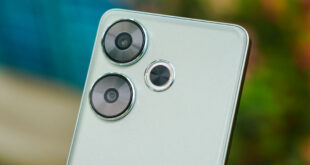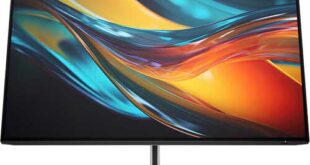Huawei MateView SE specifications
- Display: 23.8-inch Edge-lit IPS LCD panel
- Resolution: 1920 × 1080 pixels (FHD)
- Pixels per inch: 93PPI
- Aspect ratio: 16:9
- Viewing angle: 178 degrees
- Color gamut: 90% P3, 100% sRGB
- Static contrast ratio: 1000:1
- Brightness: 250 nits (typical value)
- Display colors: 16.7 million (8 bits per color)
- Features: Factory calibrated to ΔE < 2 (sRGB), Game mode, On-screen crosshair, Frame rate counter, Adjustable matrix overclocking, AMD FreeSync, Low blue light, eBook mode, 3-side frameless design, 5-way joystick control
- Ports: HDMI port × 1, DP port × 1, Charging port × 1
- Power adapter: 24 W Round Port DC Power Adapter
- Stand: Tilting of 3° forward and 18° backward
- Dimensions: 538.5 mm × 362 ~ 472 mm × 182 mm (with stand)
- Weight: 3.4 kg (with stand)
Design
The design of the Huawei MateView SE monitor is minimalistic. The screen unit and stand casing are made of plastic, mostly with a simple matte black surface. The outer surface of the panel is black and semi-matte. The screen looks like a monolithic surface, bounded from below by a plastic strip, and from above and along the sides by a narrow plastic one.
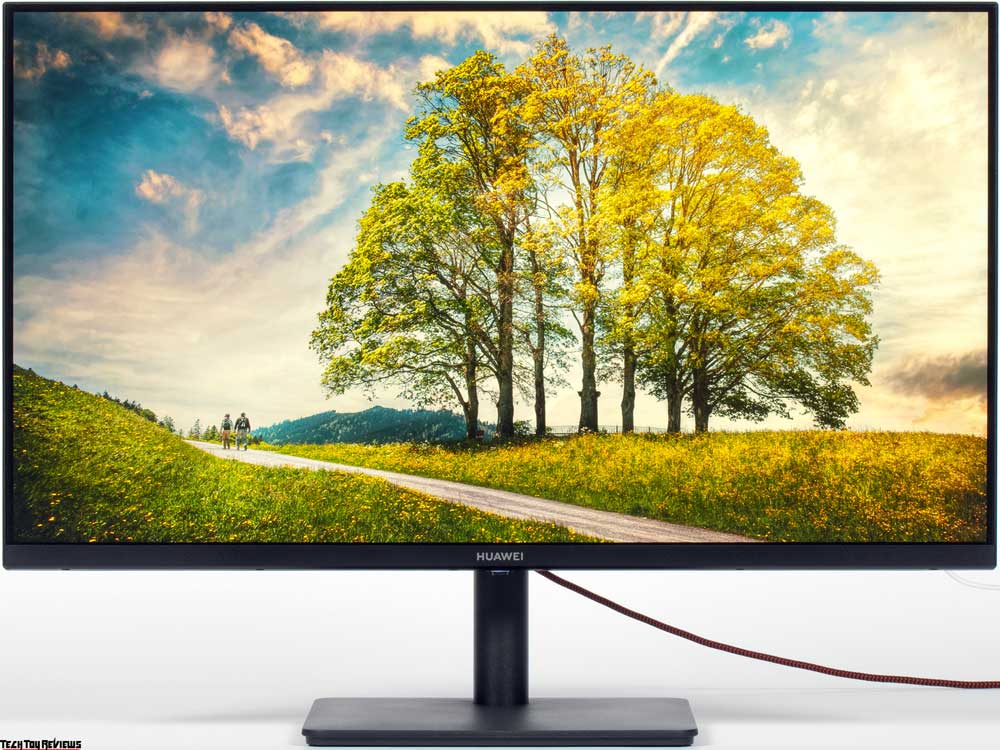
You can see that there are narrow margins between the bar and edge and the actual display area (3 mm on the top and sides, and 2 mm on the bottom). The margins are narrow, which allows the manufacturer to claim 92% of the usable screen area. In the center of the front bar and on the back panel are the manufacturers’ logos made in grey-silver colour.
At the bottom end of the screen block in the center is a small five-way joystick (divergence and pressure in four directions). On the front of the joystick is an insert made of matte translucent plastic, which is illuminated by a status indicator. Up front, the indicator light is not visible in a typical user situation.
The monitor looks neat from behind. All interface ports and power connectors are located in a shallow recess on the rear panel and are oriented backward. Connecting to these connectors is convenient.
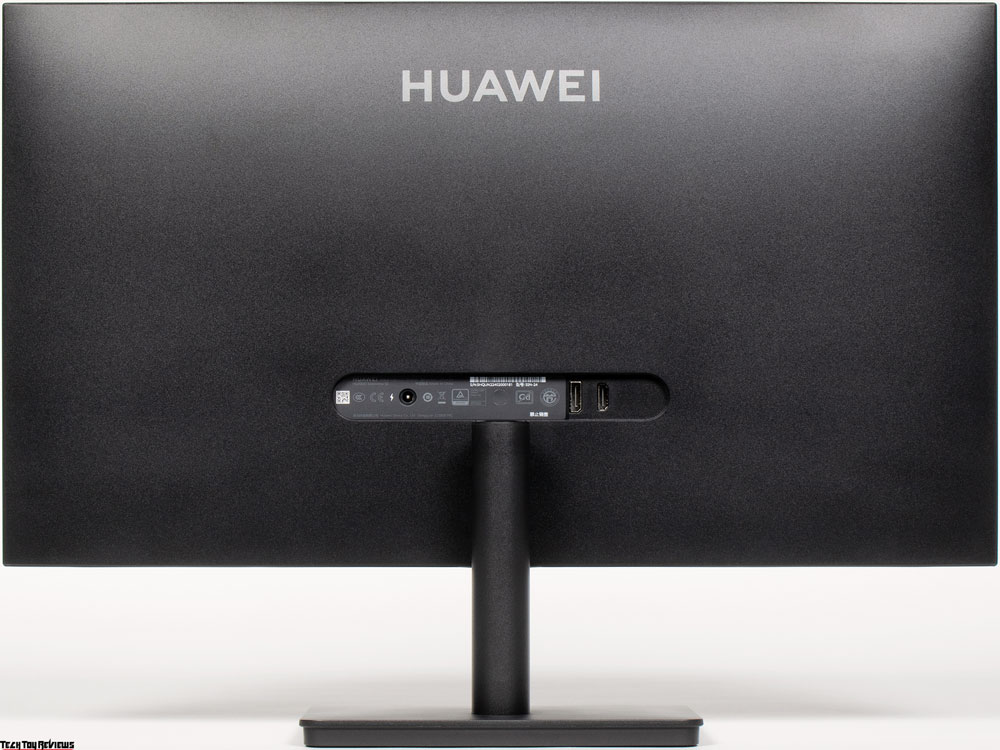
The stand is made of plastic. The base is reinforced with several hardening ribs. The design of the stand is not very rigid, but still, it provides good stability to the monitor. Rubber feet on the bottom of the stand base protect the table surface from scratches and keep the monitor from slipping on smooth surfaces.
The base of the stand is relatively large in area, but it is only slightly convex from above and almost horizontal, which increases the efficiency of using the table’s working area. For example, you can place small office items on top or on the edge of the base.
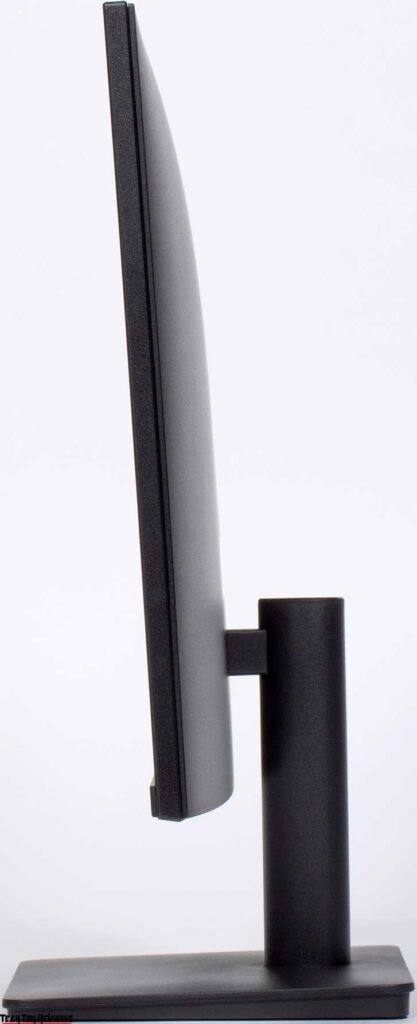
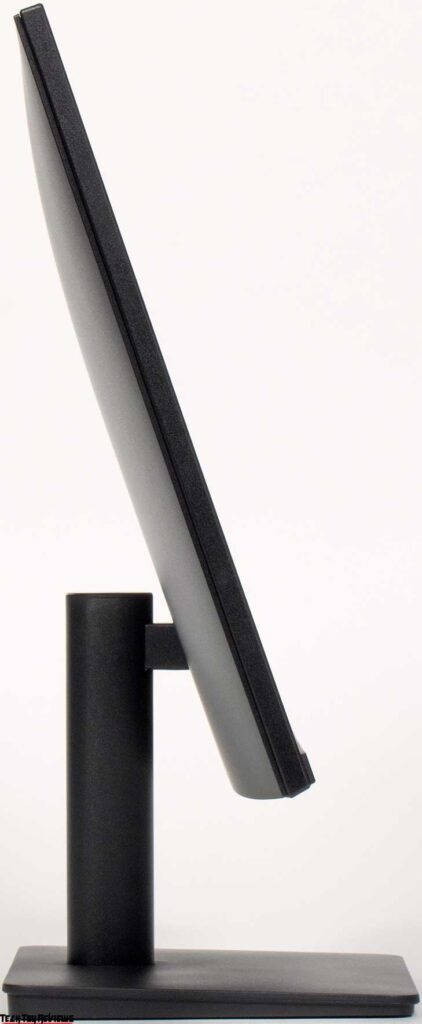
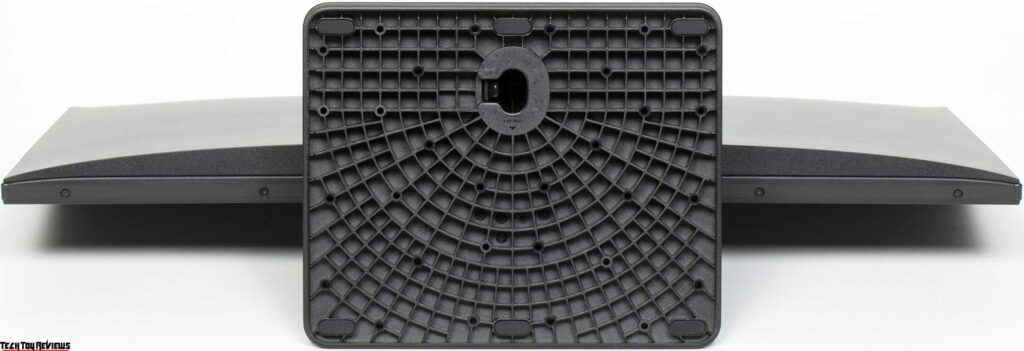

The standard stand allows you to tilt the screen block forward slightly and tilt it back at a greater angle. Note that there is no height adjustment, and the regular stand is low, so in most cases, for comfortable work on the monitor, the screen unit will have to be tilted back slightly.
Functions and features
The power indicator glows white dimly during operation, in standby mode, it slowly blinks white (it can be turned off) and does not light if the monitor is conditionally (unfortunately, there is no mechanical power switch) turned off.
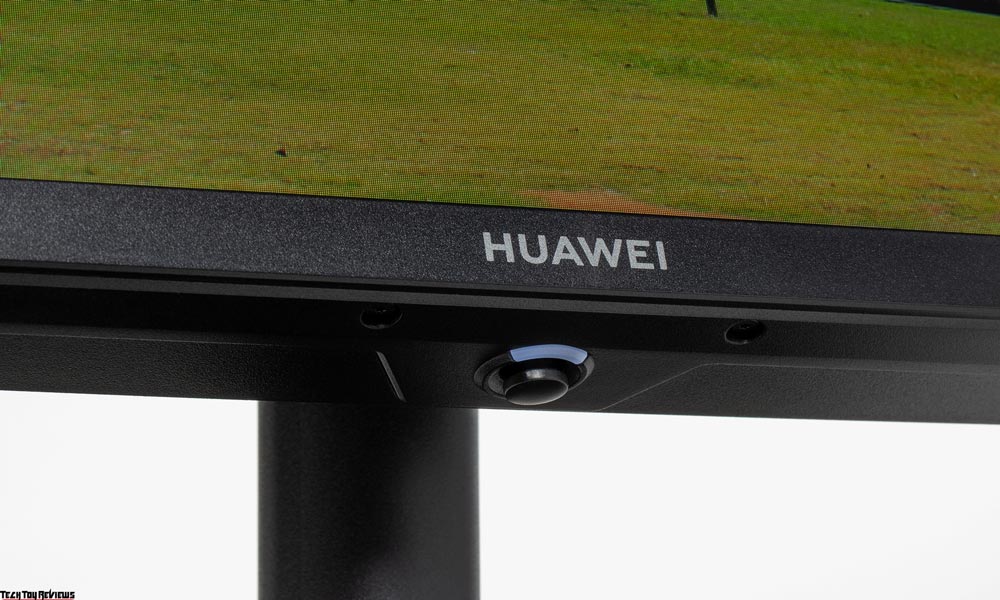
The menu is quite large and the inscriptions are readable. Navigation is convenient since everything is done only with a joystick, you don’t need to move your finger over the buttons, and the lists are looped. When adjusting the image, the menu remains on the screen – this somewhat interferes with the assessment of the changes made. The transparency level of the background and the delay of automatic exit from the menu is adjusted.
There are two “gaming” functions: the display of the frame rate counter and the crosshairs of the sight of the selected type and color (red or green). The position of these elements on the screen can be adjusted (pixel shift for the crosshair and selection of one of the top corners for the frame rate), but only one thing is displayed.
There are not very many settings that affect the brightness and color balance. There are adjustments for brightness (backlight), contrast, edge sharpness, and a function to reduce the intensity of the blue component.
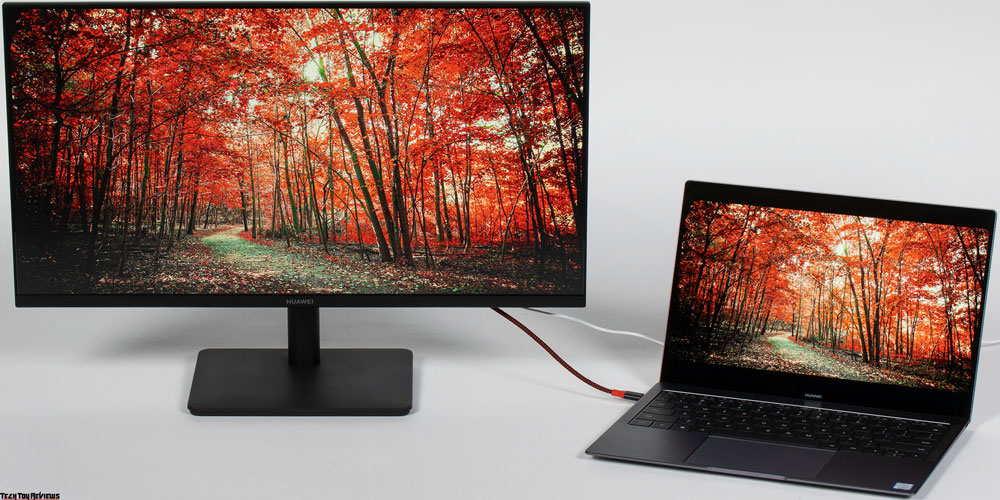
When the Huawei MateView SE is connected to a computer via any of the inputs, there is support for up to 1920×1080 at 75 Hz frame rates. At this resolution and refresh rate, 8 bits per color (RGB encoding) is supported. In the case of DisplayPort and a professional graphics card, 10 bits per color mode is supported, but the display on the monitor screen still occurs in 8 bits per color mode.
We conducted this Huawei MateView SE review using the Nvidia Quadro K600 graphics card and the NEC Display Solutions 10-bit Color Depth Demo program. This test shows whether programs such as Adobe Photoshop and Adobe Premier Pro that use OpenGL can achieve 10-bit color output on a professional graphics card such as Nvidia Quadro, AMD FirePro, or AMD Radeon Pro.
This Huawei monitor supports FreeSync technology on DisplayPort and HDMI inputs. The range of supported frequencies, which is indicated on the graphics card settings panel, is 48-75 Hz for modes with a frame rate of 75 Hz. The inclusion of FreeSync allowed us to get an image with smooth movement in the frame and without gaps. Formally, with Nvidia graphics cards, this Huawei MateView SE supports G-Sync in G-Sync Compatible mode, but only via the DisplayPort input. G-Sync mode was enabled during the Pendulum Demo utility test, but the stability of smooth output without tearing was extremely low.
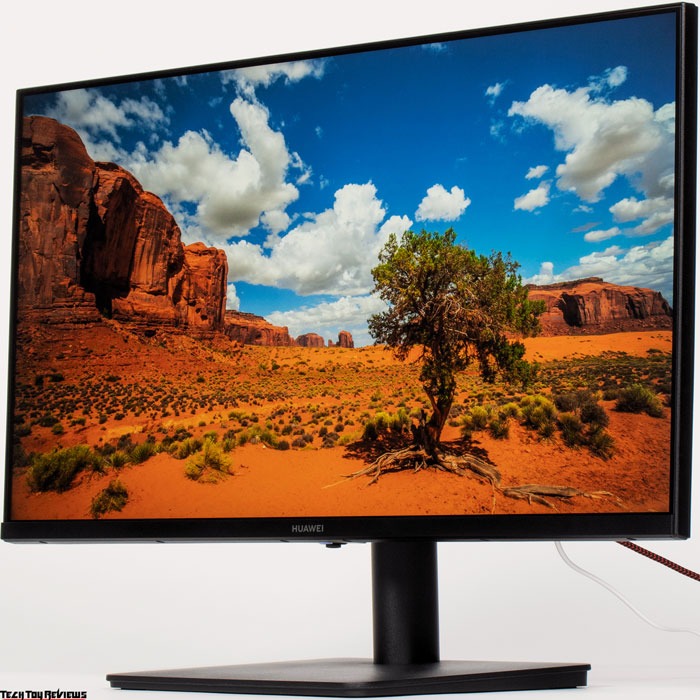
We tested cinematic modes of operation using the Sony UBP-X700 Ultra HD Blu-ray player. We checked work on HDMI. The Huawei MateView SE accepts 576i/p, 480i/p, 720p, 1080i and 1080p signals at 50 and 60 fps. 1080p@24fps is not supported. In the case of interlaced signals, the video simply outputs field by field. Subtle gradations of shades differ both in highlights and in shadows for the standard range of video (blockage of one hue in shadows and highlights can be neglected). Brightness and color clarity are high. Interpolation of low resolutions to matrix resolution is performed without significant artifacts.
There is no “crystal” effect. The matte surface of the panel allows you to work comfortably in the case of a typical variant of the location of the monitor, user, and lamps in the room.
Display
Due to the matte surface of the screen, a clear pixel image could not be obtained (black dots are dust on the camera), however, the subpixel structure characteristic of IPS is visible:
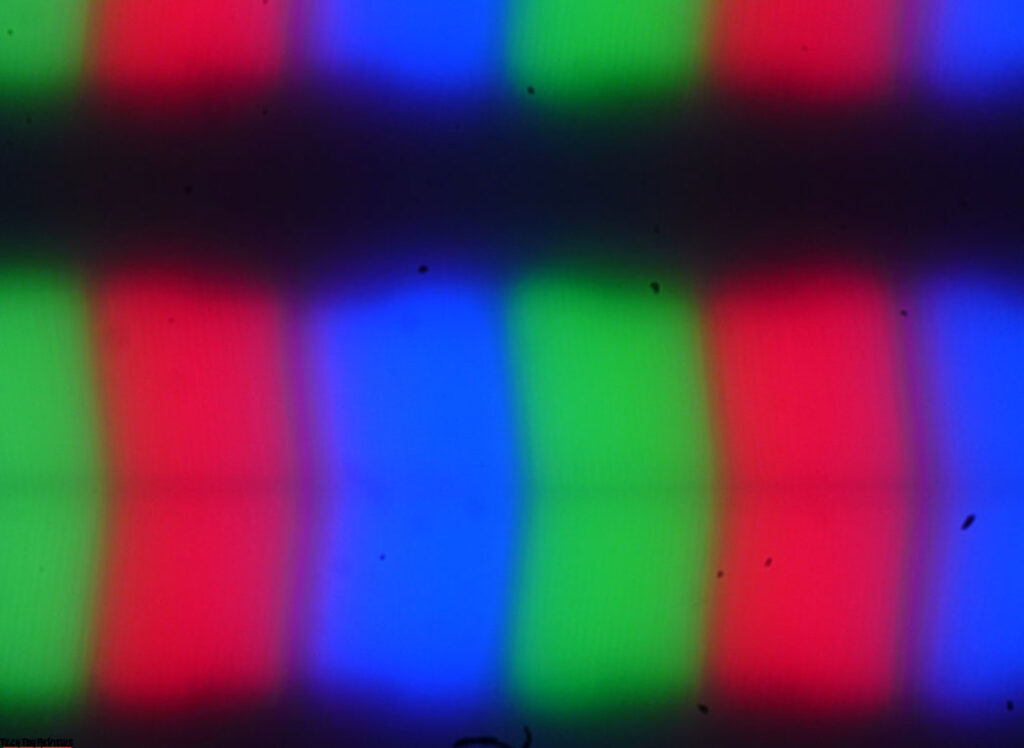
Focusing on the screen surface revealed randomly located surface micro defects responsible for the matte properties:
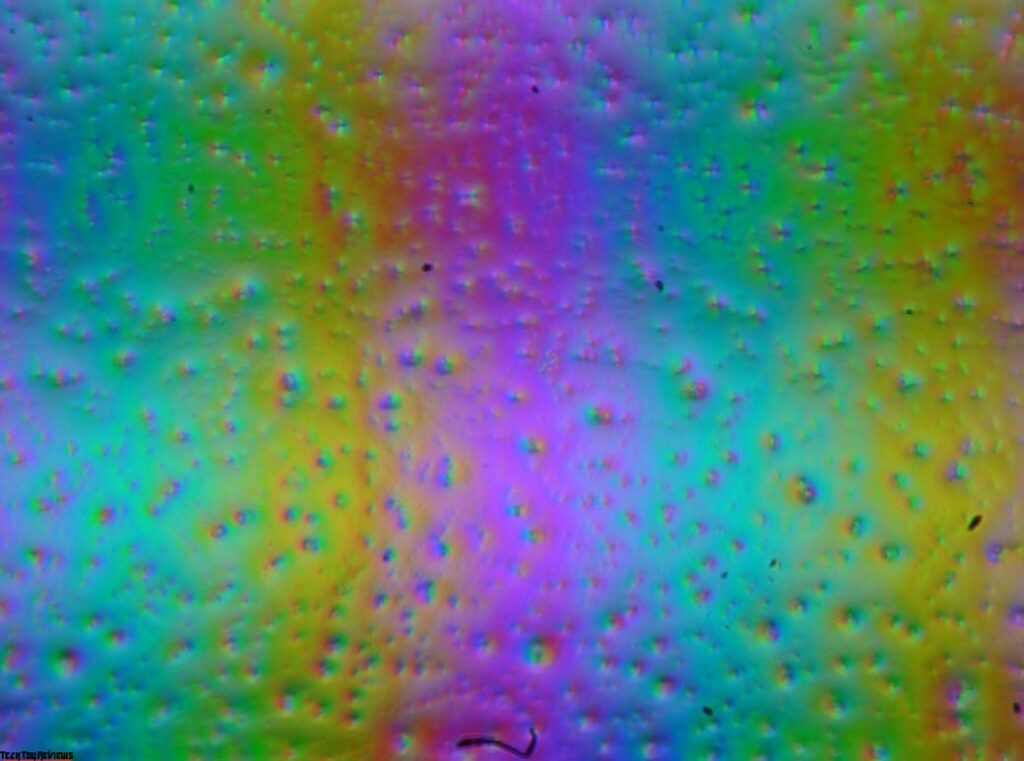
The grain of these defects is several times smaller than the size of the subpixels (the scale of these two photographs is the same), therefore, focusing on micro defects and the “jumping” of the focus over subpixels with a change in the angle of view are weakly expressed, because of this there is no “crystal” effect.
The actual gamma curve depends on the selected profile:
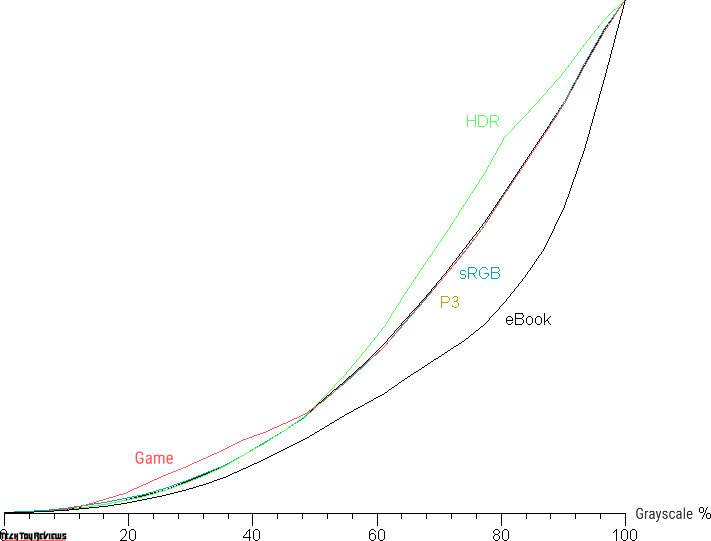
Special profiles are the Game, in which the brightness of the dark (but not the darkest) shades is increased, HDR – the brightness of the light shades is increased, eBook – the overall image brightness is reduced.
Normal, that is, working profiles are P3 (and its equivalent User), as well as sRGB. The graphs below show the increase (not an absolute value!) in brightness between adjacent halftones. First in the case of profile P3:
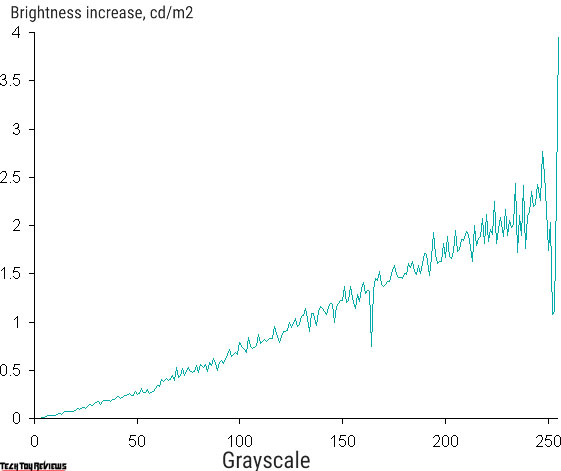
The growth of the increase in brightness is more or less uniform (there are a couple of deviations in the highlights), and each next shade is formally brighter than the previous one. sRGB profile:
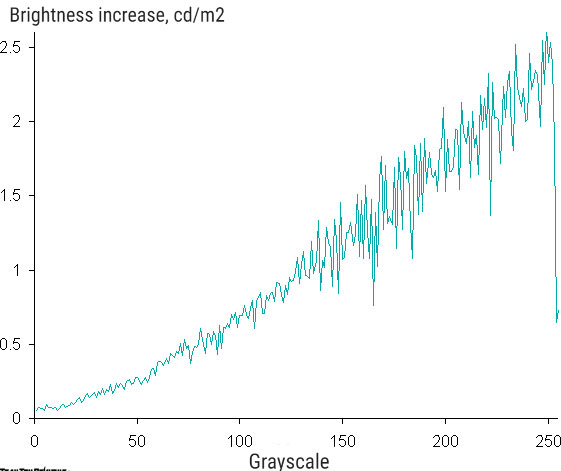
There are differences, but still, each next shade is brighter than the previous one. However, in the darkest area, the nature of the increase in brightness in the case of these profiles is different. In the case of P3, the growth is close to a power function, so a couple of the darkest shades are visually poorly distinguished from black:
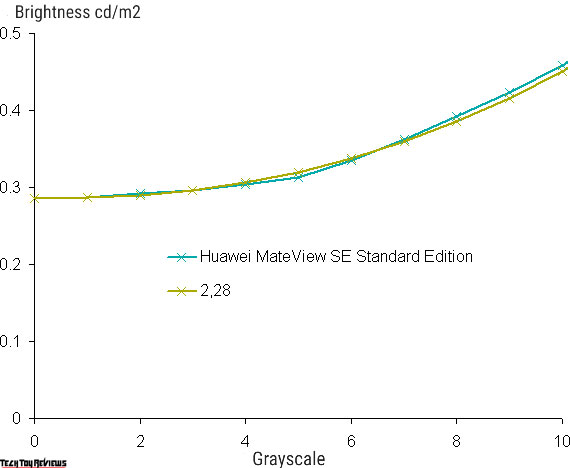
In the case of sRGB, the increase in brightness of the darkest shades is close to linear, which corresponds to the sRGB standard, and leads to good discrimination between shades:
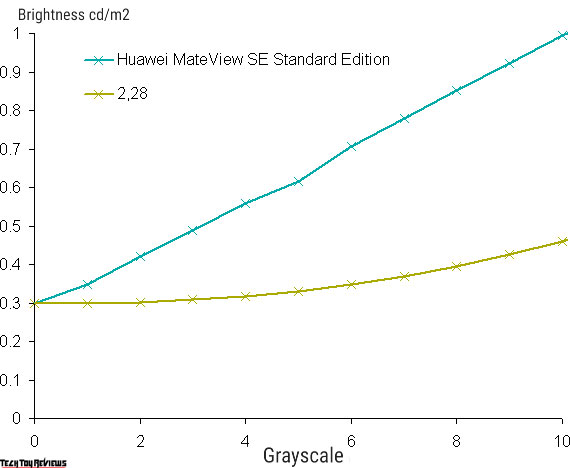
As a result, in games, you can try to select the sRGB profile, in which you can “see” better in the shadows.
Approximation of the resulting gamma curve in the case of P3 and sRGB profiles gave an indicator of 2.28, which is slightly higher than the standard value of 2.2. In this case, the real gamma curve deviates little from the approximating power function:
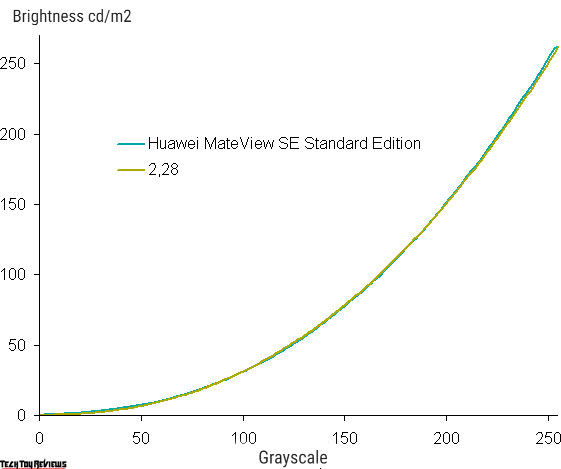
The original color gamut is much wider than sRGB and close to DCI-P3 (this is the case in all profiles except sRGB and eBook):
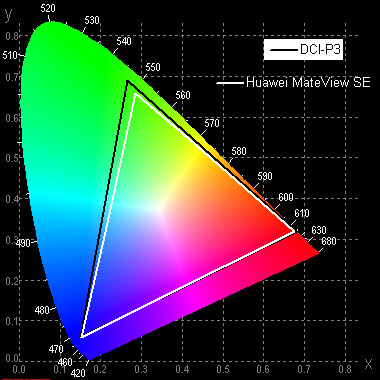
In the case of an sRGB profile, coverage is adjusted accordingly:
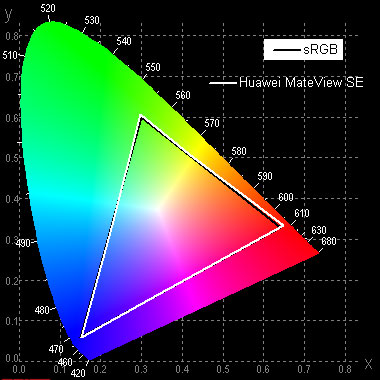
Below is the spectrum for a white field (white line) superimposed on the spectra of red, green, and blue fields (lines of the corresponding colors) in the case of the original color gamut:
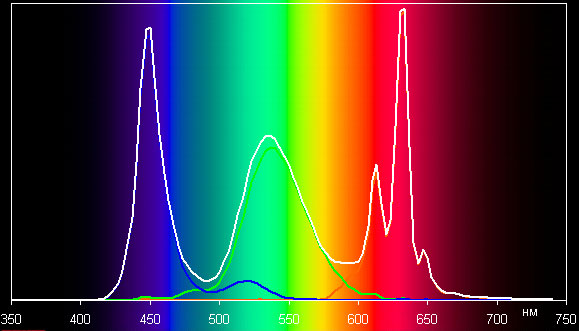
The spectra of primary colors are very well separated, which leads to a wide color gamut. The slight cross-mixing appears to be caused by imperfect separation with filters. It can be assumed that backlight LEDs use a blue emitter and green and red phosphors, while the phosphors use the so-called quantum dots. In the case of an sRGB profile with gamut adjustment, the components are already blending to a large extent:
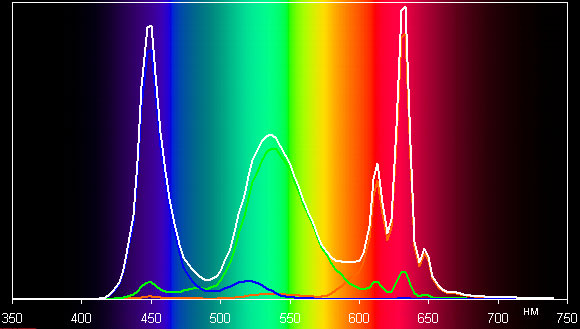
When you select an eBook profile, the image loses color, and everything is displayed in grey monochrome.
The color balance in all built-in profiles (except for eBook of course) is quite good (if the Color temperature setting is set to Standard – this is the default), since the color temperature is quite close to the standard 6500 K, and the deviation from the black body spectrum (parameter ΔE) much less than 10 units, which is considered a very good indicator for a consumer device.
At the same time, both parameters change little in different parts of the grayscale, which improves the visual perception of color balance. But still, we tried to improve the color balance by adjusting the gain of the three primary colors. The graphs below show the color temperature in different areas of the grayscale and the deviation from the blackbody spectrum (parameter ΔE) in the absence of interference and after manual correction (R = 100, G = 96, B = 98;
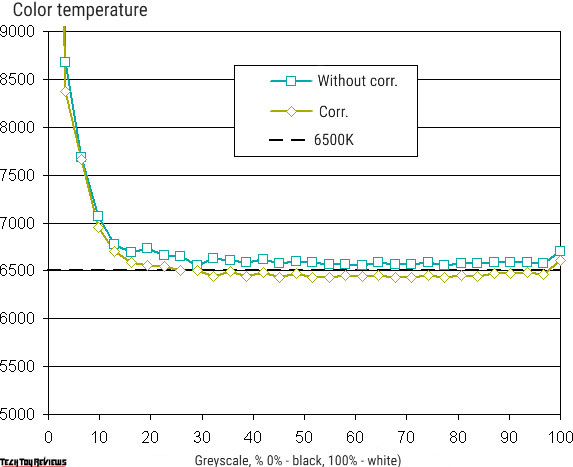
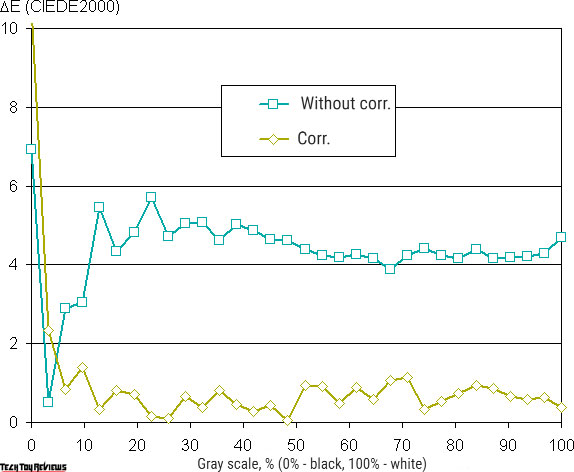
The range closest to black can be ignored, since the color rendering is not so important in it, and the measurement error of color characteristics is high. After the adjustment, the color balance has become even better, but, in principle, in most cases, and even for responsible work with graphics, it will be enough to select the sRGB or P3 profile.
The brightness measurements were taken at 25 points on the screen spaced 1/6 of the screen width and height (screen borders not included, monitor settings set to provide maximum brightness and contrast). The contrast was calculated as the ratio of the brightness of the fields at the measured points.

If you step back from the edges, then the uniformity of all three parameters is acceptable. The contrast for this type of panel is typical by modern standards. It is visually seen that the black field is still slightly overexposed in places closer to the edges. The image below demonstrates this:
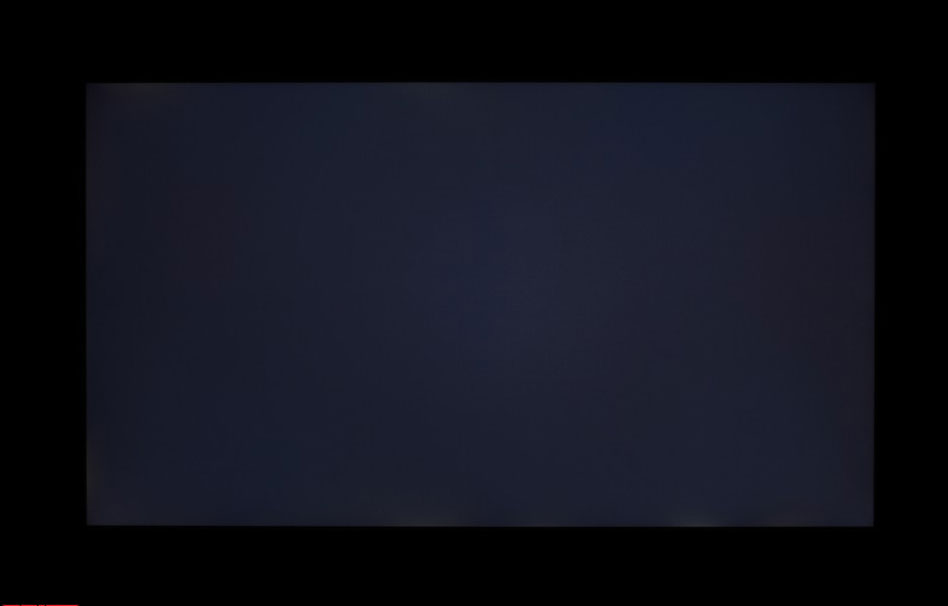
When you turn on the mode with dynamic brightness control, the established inter-frame contrast formally increases, but not to infinity, since even on a black field in full screen, the backlight does not turn off at all. The graph below shows how the brightness (vertical axis) increases when switching from a black box in full screen (after 5 seconds of exposure) to a white box in full screen with dynamic brightness control off and on:
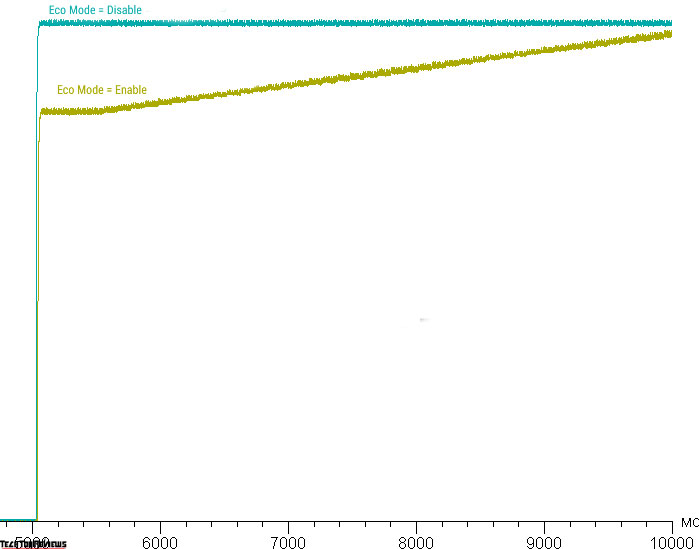
In principle, dynamic brightness adjustment can improve the perception of dark scenes, but in this case, the backlight brightness change rate is very slow (the process takes up to 20 seconds), so there is little practical use for this function.
The brightness of the white field in the center of the screen and power consumption from the network (other settings are set to values that provide maximum image brightness):

In standby mode and a conditionally off state, the monitor consumes about 0.2 watts.
The brightness of the Huawei MateView SE is changed precisely by the brightness of the backlight, i.e. without compromising the quality of the image (the contrast and the number of distinguishable gradations are preserved), the brightness can be changed over a wide range, which allows you to comfortably work and watch movies both in a brightly lit and in a dark room.
At any brightness level, there is no significant backlight modulation, which eliminates visible flickering of the screen. For those who are used to recognizing the familiar abbreviation, let’s clarify: there is no PWM. As proof, here are graphs of the dependence of brightness (vertical axis) on time (horizontal axis) at various values of the brightness setting:
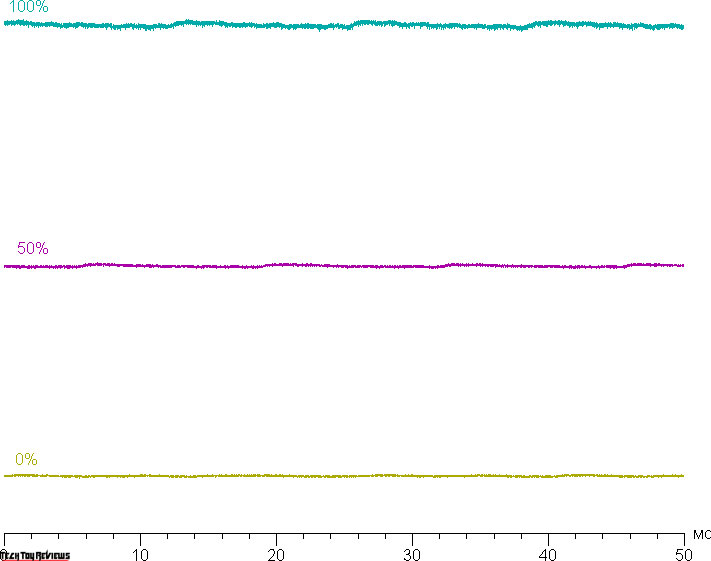
Heating
The heating of the Huawei MateView SE can be estimated from the following images from the IR camera, obtained after the monitor has been operating for a long time at maximum brightness in a room with a temperature of approximately 24° C:
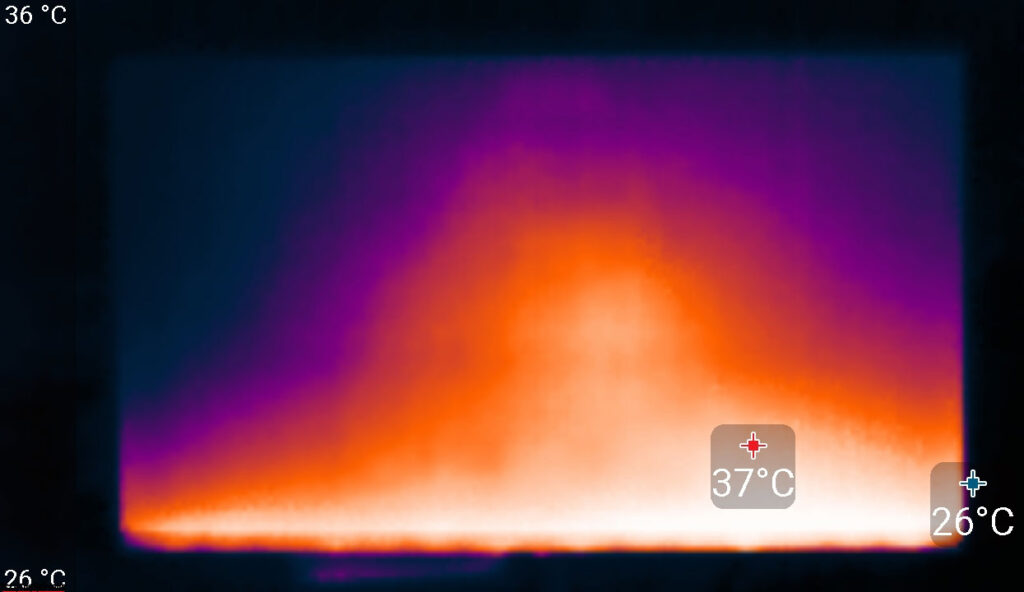
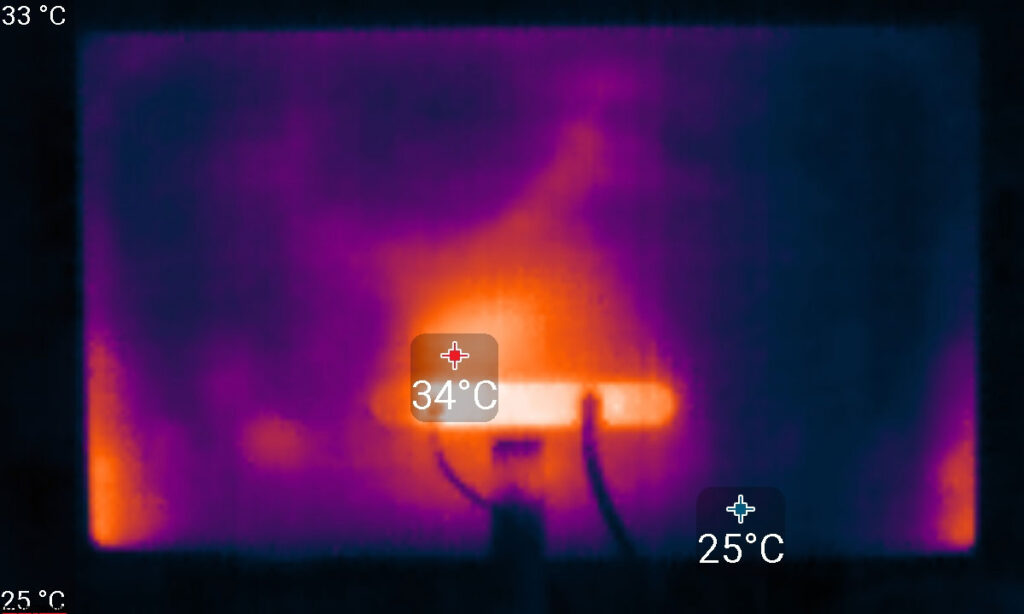
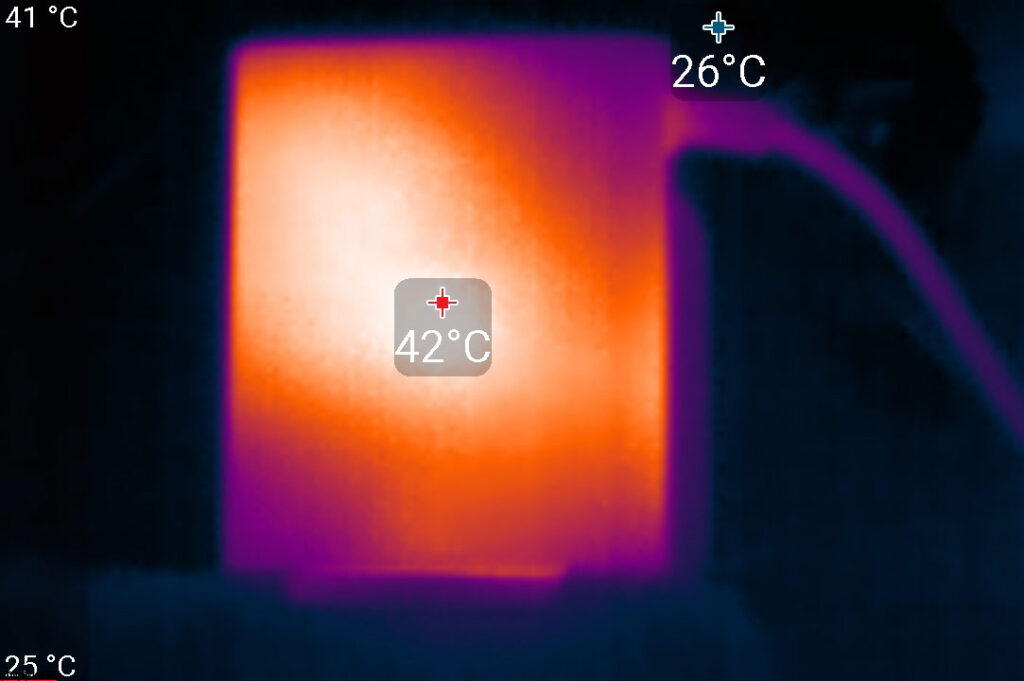
The heating is moderate. The increased heating of the lower edge indicates that the LED bar of the screen backlight is located at the bottom.
Response time and delay
The response time depends on the value of the setting of the same name, which controls the overclocking of the panel. Four levels of adjustment. The diagram below shows how the turn-on and turn-off times change during the black-white-black transition (on and off bars), as well as the average total time for transitions between halftones (GTG bars):
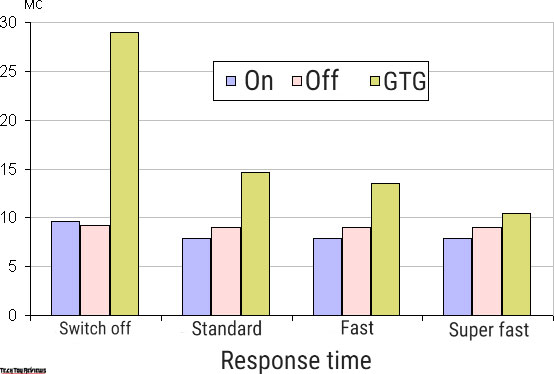
Below are graphs of the grayscale transition between shades of 40% and 60% and vice versa for various Response Time settings (vertically – brightness, horizontally – time, for clarity, the graphs are arranged sequentially):
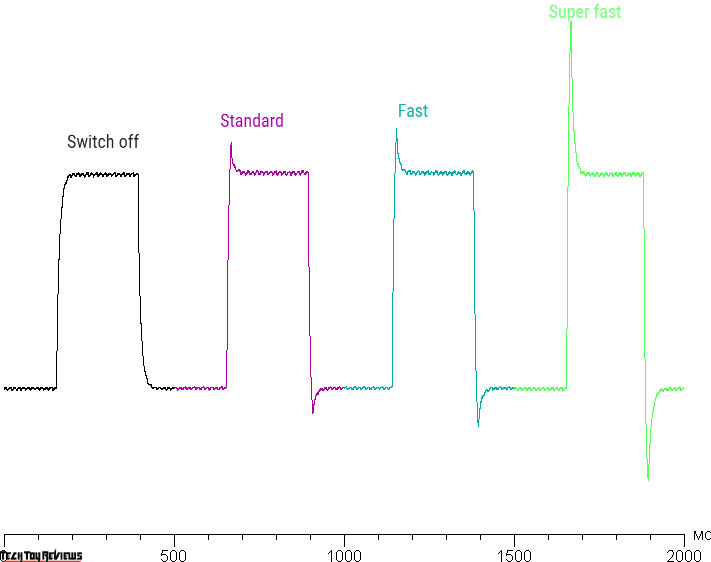
It is better to stop at the penultimate value since artifacts are very noticeable at maximum overclocking. From our point of view, the speed of the panel is still sufficient even for dynamic games.
Here is the dependence of brightness (vertical axis) on time (horizontal axis) when alternating white and black frames at a 75 Hz frame rate:
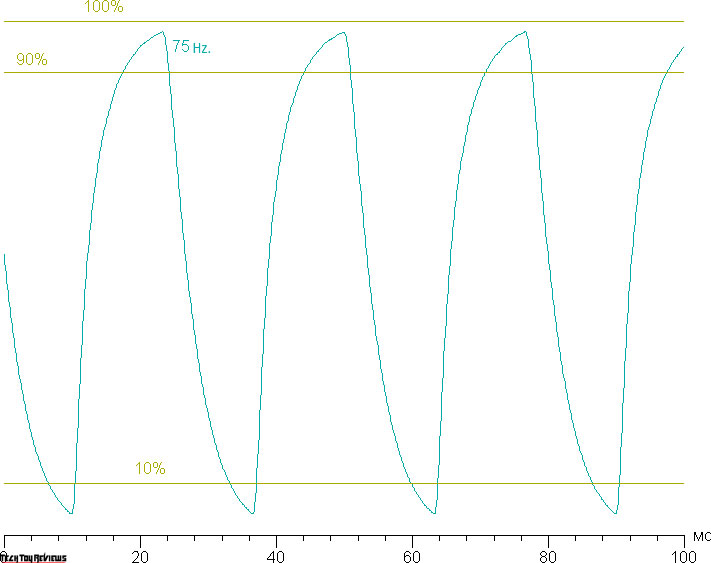
It can be seen that at 75 Hz frame interleaving, the maximum brightness of the white frame is above 90% of white, and the minimum brightness of the black frame is below 10%. As a result, the amplitude of the brightness change is more than 80% of the white level, that is, according to this formal criterion, the panel speed is sufficient for a full-fledged image output with a frame rate of 75 Hz.
What does this kind of matrix motion mean in practice? And for a visual representation of what the overclocking artifacts may be? We present a series of images taken with a moving camera. Such pictures show what a person would see if he followed an object moving on the screen with his eyes. The recommended settings were used – a speed of 960 px/s for a frequency of 60 Hz, and 975 px/s for a 75 Hz. The shutter speed is 1/15 s, and the photos show the refresh rate values, as well as the overclocking phase (OD with a number).
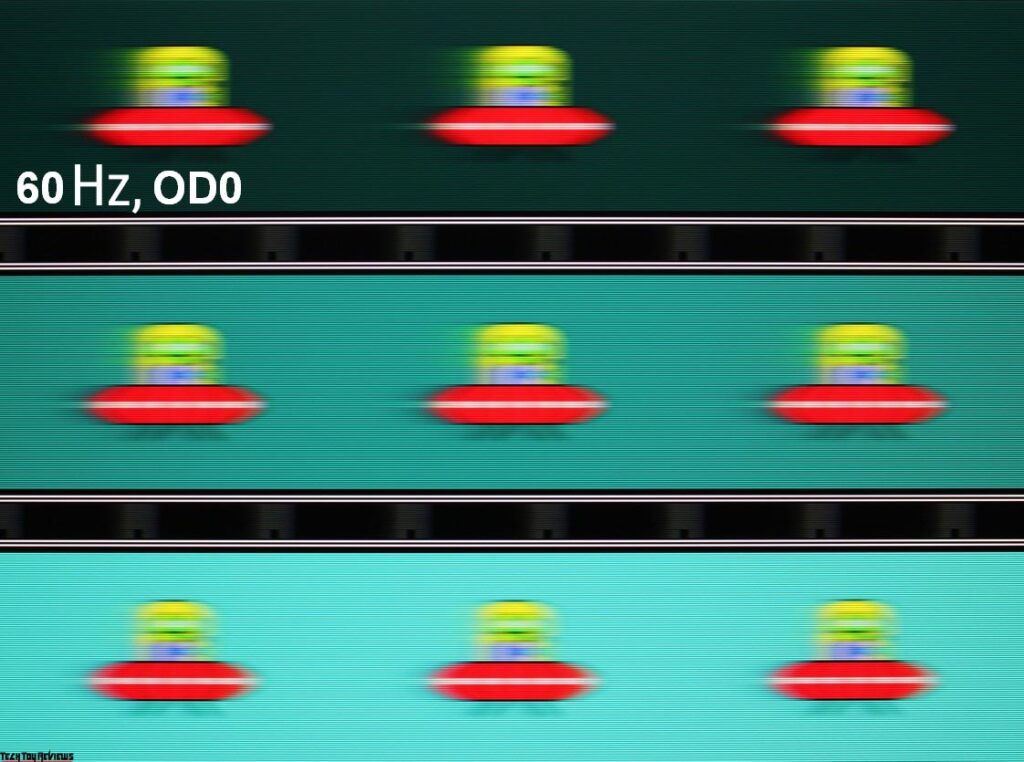
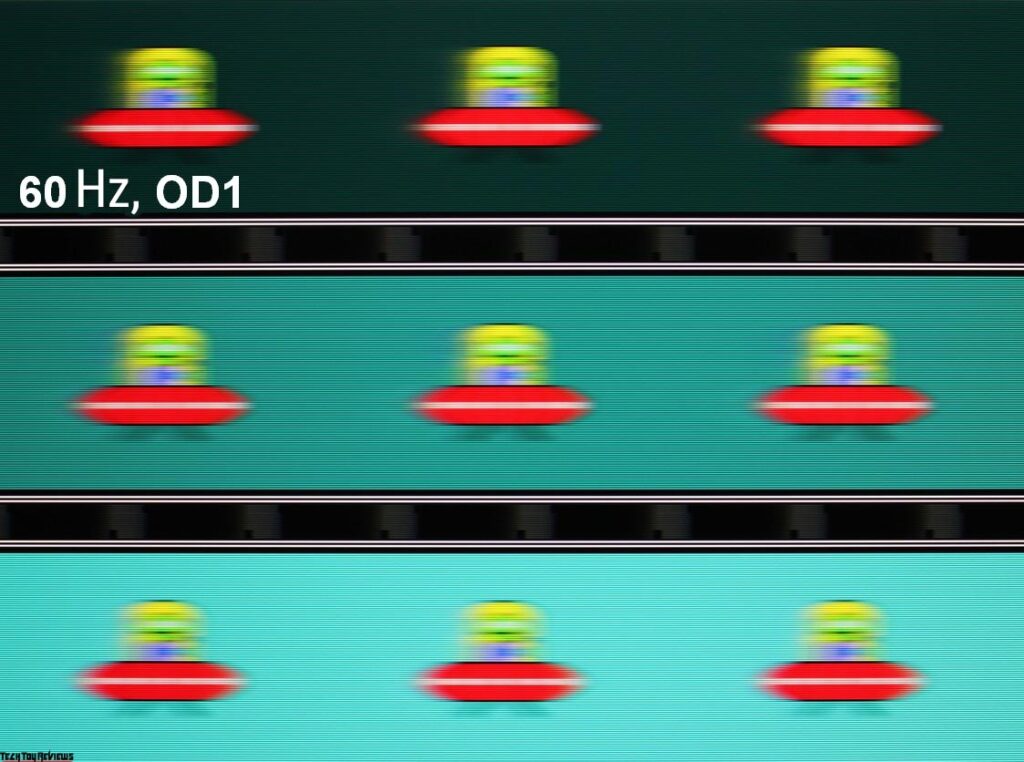
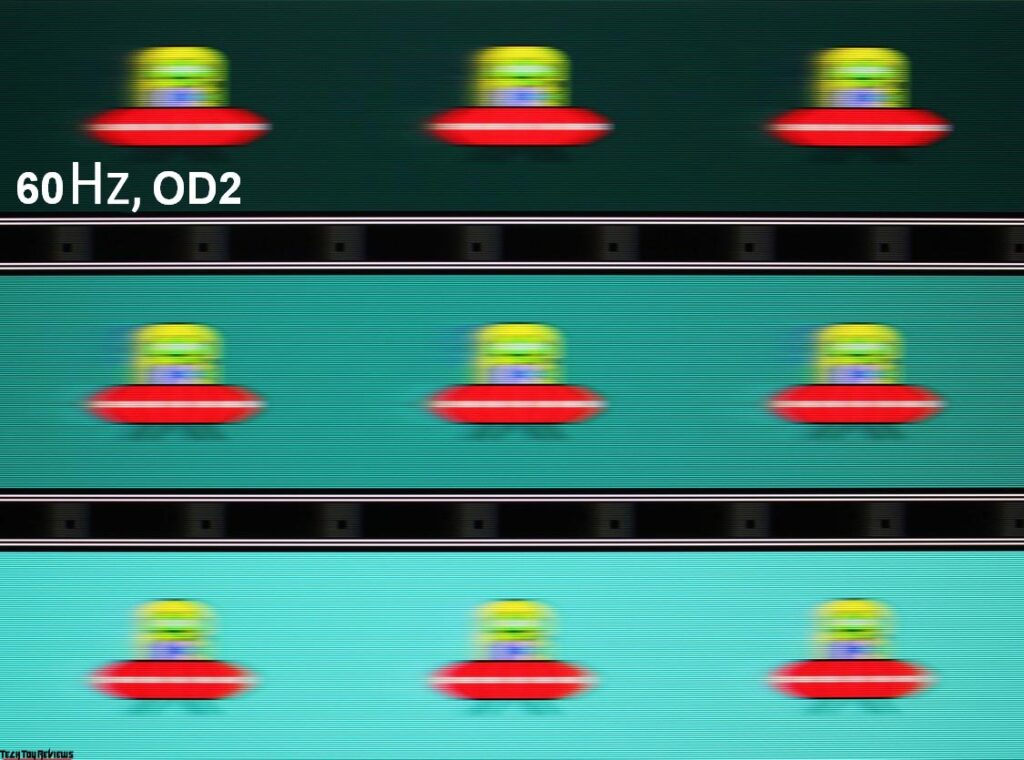
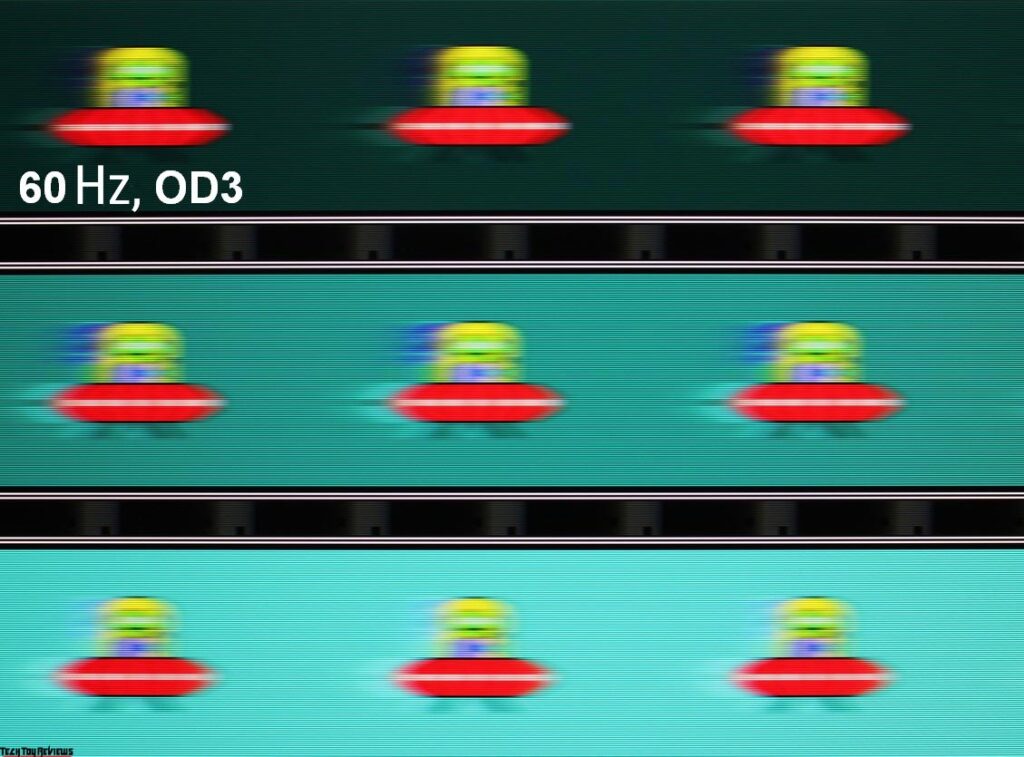
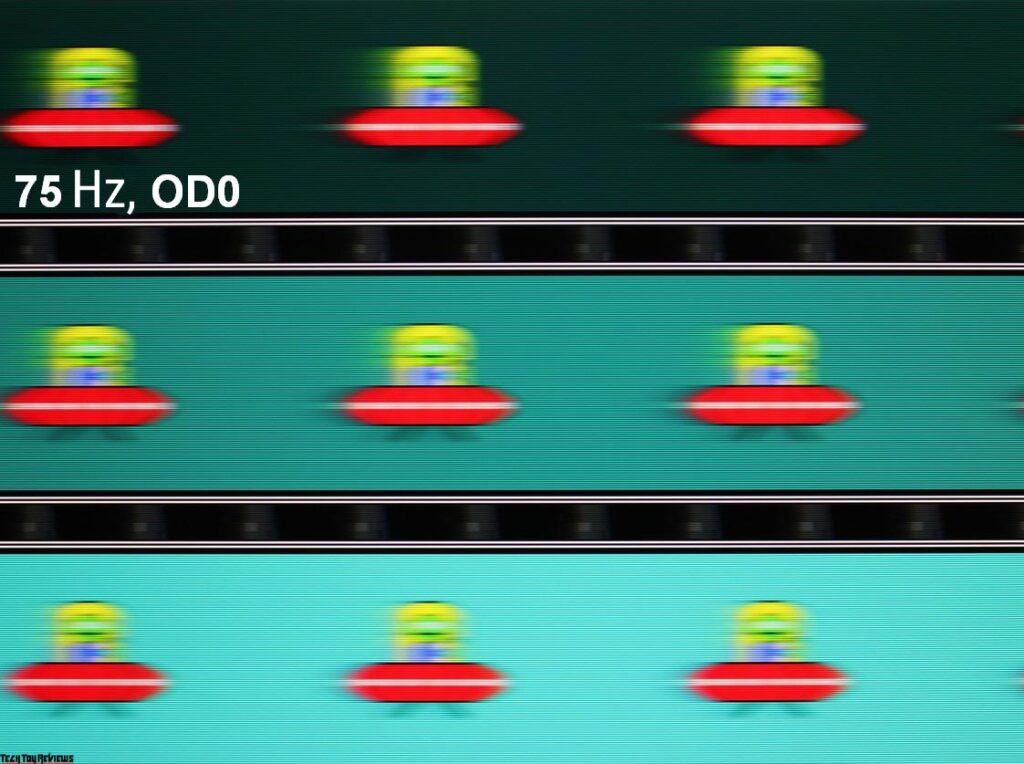
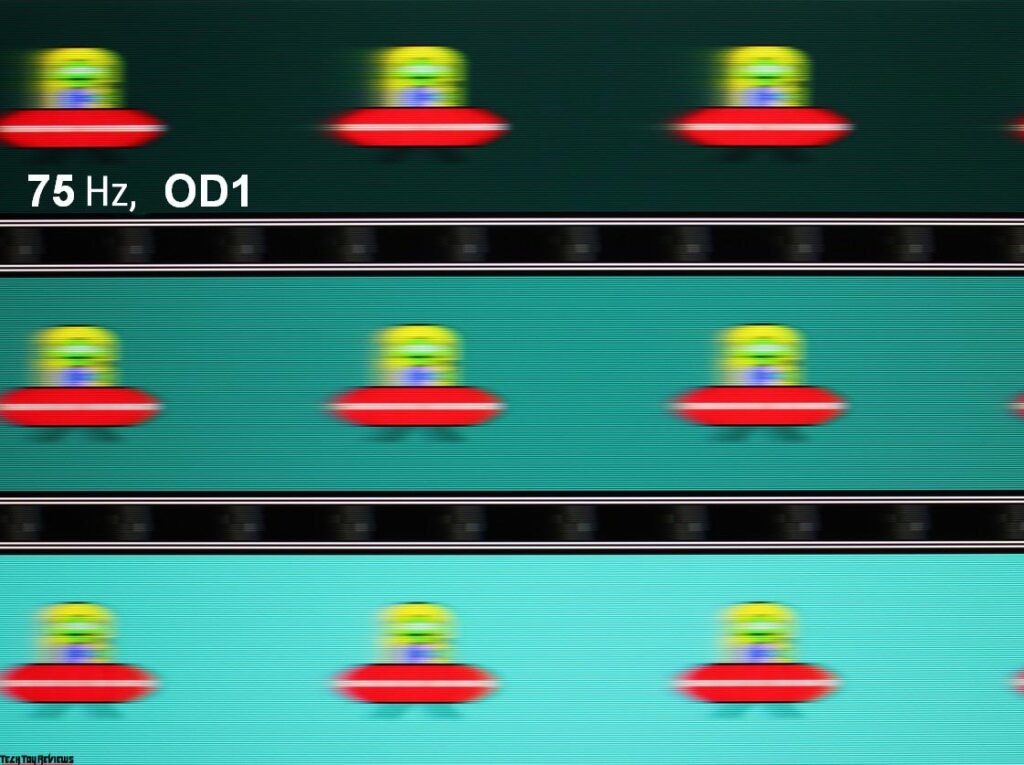
It can be seen that the image clarity increases as the refresh rate increases (in this case, slightly) and the degree of overclocking, but at maximum overclocking, the artifacts (loop behind the dish) are already very noticeable.
Let’s try to imagine what would happen in the case of a matrix with instant pixel switching. For it, at 60 Hz, an object with a motion speed of 960 pixels/s is blurred by 16 pixels, at 75 Hz and 975 pixels/s, by 13 pixels. Blurred because the focus moves at the specified speed, and the subject remains stationary for 1/60 or 1/75 of a second. To illustrate this, let’s simulate blurring at 16 and 13 pixels:
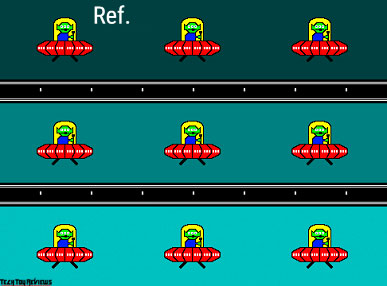
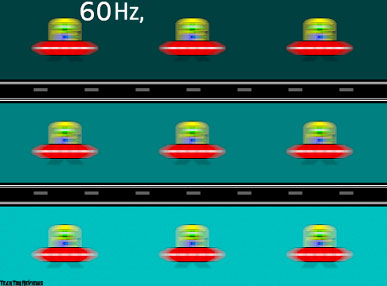
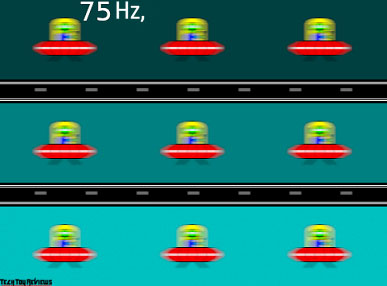
It can be seen that the clarity of the dynamic image on this monitor is lower than on an ideal matrix even after overclocking the matrix.
We determined the total output delay from switching pages of the video buffer to the start of displaying the image on the screen (recall that it depends on the features of the Windows OS and the graphics card, and not only on the monitor). The delay is 7 ms, it is an insignificant value, and it will not be felt even in the most dynamic games.
Viewing angle measurement
To find out how the screen brightness changes when deviated from perpendicular to the screen, we took a series of measurements of the brightness of black, white, and shades of gray in the center of the screen at a wide range of angles, deviating the axis of the sensor in vertical, horizontal and diagonal directions.
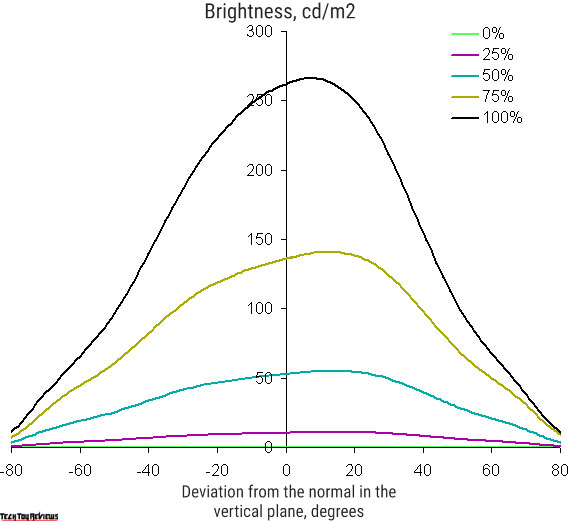
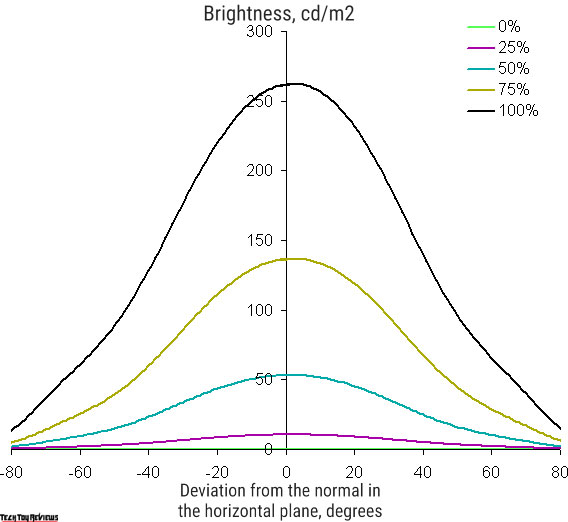
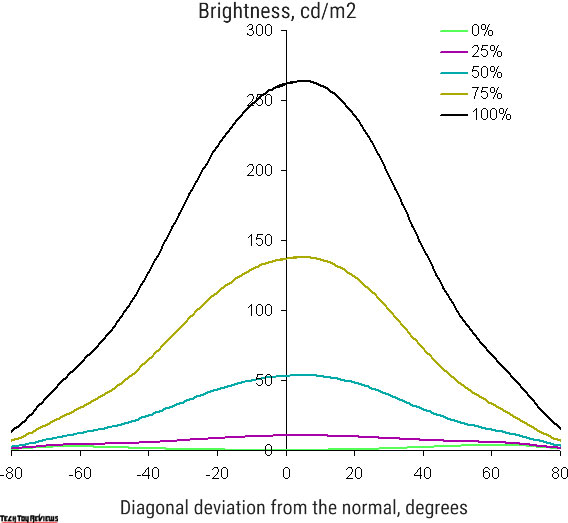
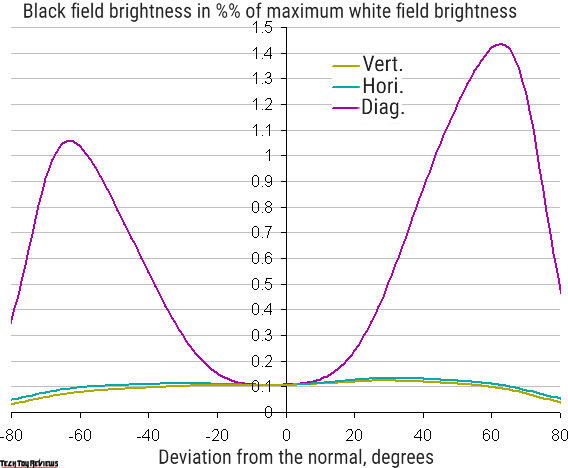
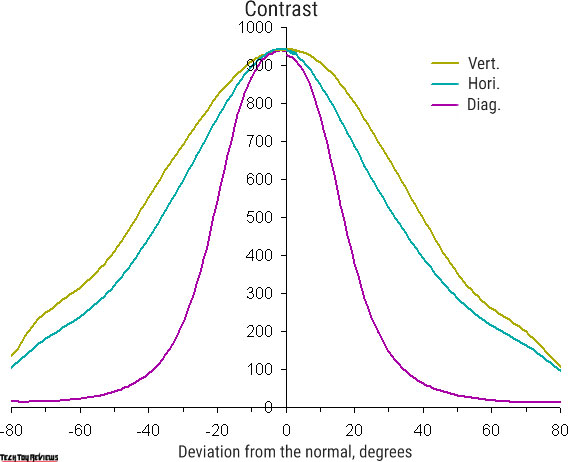
Decreasing brightness by 50% of the maximum value:

In terms of the rate of decrease in brightness, the viewing angles are quite wide, which is typical for an IPS-type panel. With a deviation in the diagonal direction, the brightness of the black field begins to increase sharply already at a 20°-30° deviation from the perpendicular to the screen. If you sit not very far from the screen, then the black field in the corners will be noticeably lighter than in the center (remaining conditionally neutral gray). The contrast in the range of angles ±82° in the case of a diagonal deviation approaches 10:1 but does not fall below.
Final line
The Huawei MateView SE Standard Edition monitor has a strictly minimalistic design and a simple stand without the possibility of height adjustment. In general, this Huawei monitor should be considered universal, for example, suitable for specific office tasks, for working with graphics, and for watching movies, but not for work that requires holding a large amount of information on the screen. Gaming use of this monitor is acceptable if a refresh rate of 75 Hz is sufficient.
Huawei MateView SE price in UK, release date
Huawei MateView SE monitor price in UK is £139.99 on Amazon.co.uk, or you can also pre-order it at £179.99 for a model with an adjustable screen and vertical rotation on the Amazon.co.uk store. It will be released on September 4, 2022.
 Technology News, Reviews and Buying Guides review, monitor review, tablet review, laptop review, mobile review, smartphone review, buying guide,
Technology News, Reviews and Buying Guides review, monitor review, tablet review, laptop review, mobile review, smartphone review, buying guide,
